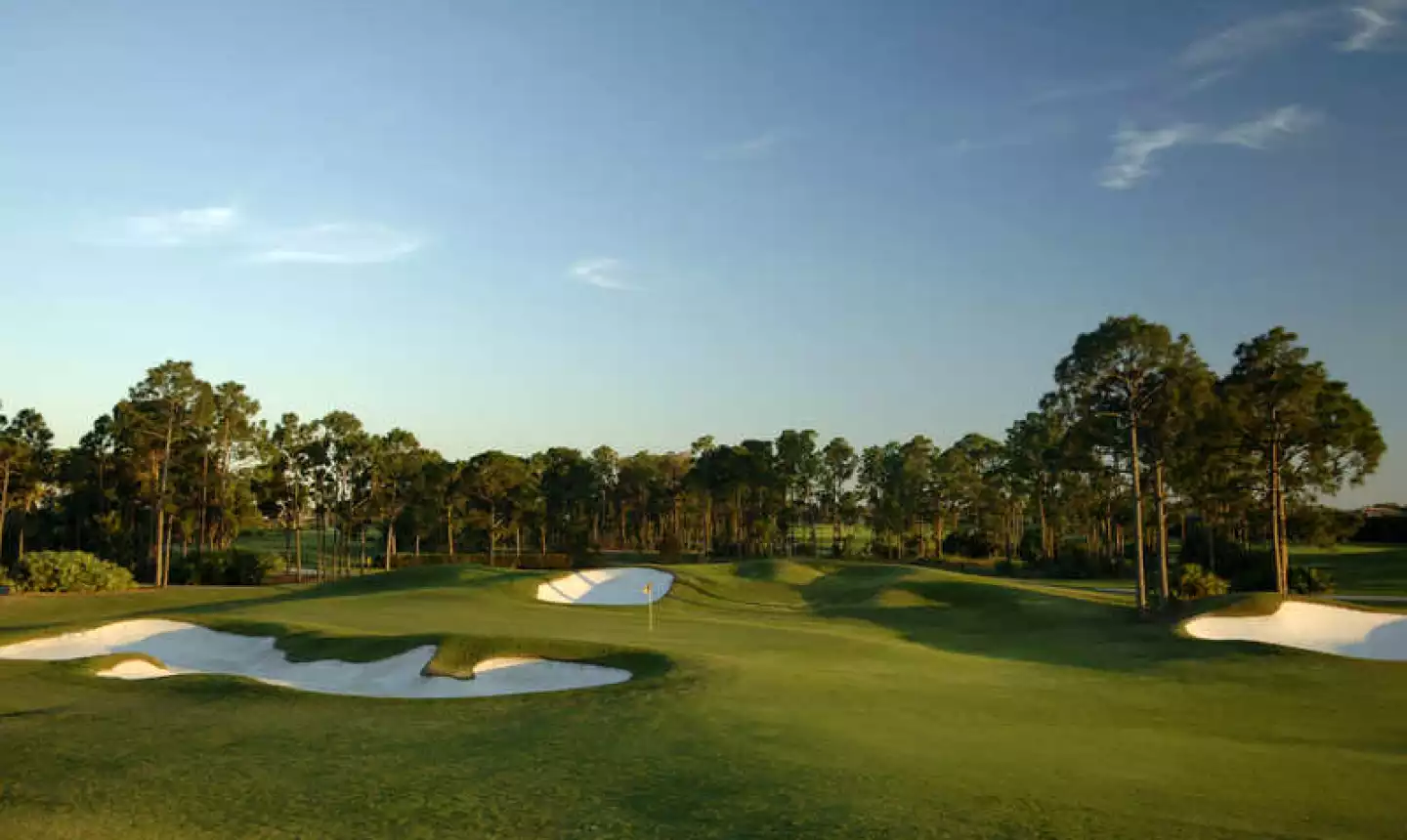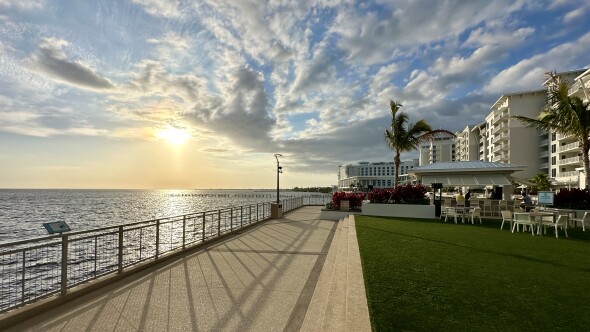PORT SAINT LUCIE, Fla. -- Now in its 21st year, PGA Golf Club has become what the PGA of America envisioned all along -- a golf mecca for its members and guests and a source of pride for the PGA and its 28,000 members and apprentices.
It would seem that would be a given. After all, when the facility opened in 1996, the PGA enlisted one of the best architects in the world to craft what was then known as the North and South courses. The association built a beautiful clock-tower clubhouse with valet service and club unloading and loading services out front, opened a restaurant inside the clubhouse and completed the project with what is perhaps the best practice facility in the world -- the 35-acre PGA Learning Center. A few years later, Pete Dye crafted the third course at PGA Golf Club, which provided quality contrast to Fazio's two layouts.
The three courses, plus a fourth acquired later, St. Lucie Trail Golf Club, gave the PGA of America four golf courses to build its retreat, master-planned community and educational facilities around, just a half-hour or so north of its headquarters in Palm Beach Gardens. This all came under the heading of "build it and they will come." And they did come, but just not as fast as hoped.
There were some lean years at PGA Golf Club

The Dye Course is the latest course to be renovated at PGA Golf Club.
In 1996, the population in Port St. Lucie was around 60,000 or so. It was the perfect spot for the PGA of America to locate its PGA Village, which could grow along with the city, located on what is known as the Treasure Coast of Florida. And so it seemed for those first few years, that's exactly what happened. The new Golf Professional Training Program would be headquartered there, and the condos and homes around PGA Village were touted as places for its members to retire.
But neither Port St. Lucie nor the PGA of America were immune to the housing crisis of 2008. Nearly 11,000 home locally went into foreclosure during that period, and PGA Golf Club started facing its own challenges. By 2010, conditions at the club and its courses started to deteriorate. Something had to be done.
So for the past few years, as Port St. Lucie's population has tripled since 1996 and added attractions such as Major League Baseball spring training (Houston Astros and Washington Nationals make their homes here), improvements have been coming gradually. In 2012, the Trail Course was renovated. And in 2013, the Wanamaker Course (formerly South) was renovated.
Improvements start at the top
Almost four years ago, the PGA hired veteran PGA professional Jimmy Terry as its general manager. Shortly thereafter, superintendent Dick Gray was lured in as its director of grounds. Terry had a history of either rebuilding facilities or bringing them along from startup like he did at the TPC San Antonio, where he oversaw the opening of two PGA Tour golf courses (one on the PGA Tour Champions) that matured into some of the finest conditioned courses on tour.
Gray was already in Florida (not working at a course) but had an interesting connection to PGA Golf Club, or Dye more specifically. Back in the 1960s, Gray had met and worked with Dye in their home state of Indiana. In fact, early in Gray's career, he was the head greenkeeper at Crooked Stick (designed by Dye and host of the 1991 PGA Championship). It would be a relationship they would maintain for decades.
So when Gray came aboard at the PGA Golf Club, he couldn't believe the lack of conditioning on the Dye Course. The renovation and restoration of the Dye Course in 2016 would be a labor of love. They worked together meticulously on every square yard of the course, restoring the greens to their original sizes, restoring the bunkers and filling them with bright white sand, and changing out the grasses like TifEagle (greens) and Celebration Bermuda (fairways) that would better tolerate heat and humidity and provide better color. Other changes were made, too, including some ornamental grasses in out-of-play areas as well as some turf reduction.
"Mother Nature takes a toll on a golf course. This comprehensive project has corrected altered surfaces due to years of top dressing and in turn restored the greens to Pete Dye's original vision and intent," Gray said. "The Dye will be in the best shape since it opened. It's going to look great and play even better as the various grass strains will complement one another instead of competing for space."
In addition to the golf course, there have also been changes in the clubhouse. Having recently closed the nearby PGA of America Museum, many of those artifacts, including the Wanamaker Trophy as well as player memorabilia from the PGA Championship and Ryder Cup, have been moved into the clubhouse. For those who are visiting PGA Golf Club for the first time, there is more reason to arrive early or stay late. Having a meal in the cozy Taplow Pub and combining it with checking out the artifacts is highly recommended.

The Ryder Course is next on the list for renovations at PGA Golf Club.
Next up is the Fazio-designed Ryder Course (formerly North) in 2017. Similarly, it will be restored and maintained in perfect shape if Gray is in charge.
"When we get the Ryder Course done, this will be a golf trough," Gray said. "Something for everyone."
At present, 54 of the 72 holes at PGA Golf Club -- the Dye, Wanamaker and the Ryder Course -- are open to the public. Golf packages, with stays at places like the Hilton Garden Inn at PGA Village are available.

















